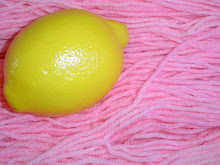Mitts
My portable project, the Endpaper Mitts are starting to show their pattern now. The colorwork is feeling more natural in my hands and I'm working a little bit faster. I'm to the part where I'll start the thumb gusset now. I love the look of stranded colorwork, but I don't do it very often. I think that's partly because I don't have the right colors or weight of yarn stashed. I know some people do stranded colorwork in DK or Worsted weight yarns, but here in Texas I'd die of heatstroke in that weight of stranded knitting. (For any non knitters out there, what you're not seeing in the above photo is that there are strands or floats of the colors as they go behind the stitches they're not part of. The finished fabric is about twice as thick as standard knitting and the extra layer traps air, which keeps you warm. Great for when you're in Northern Scotland, less necessary when you're in North Texas.)
Fair Isle knitting (a type of stranded colorwork) is typically done in two ply fingering weight Shetland wool yarn. I've got fingering weight, but most sock yarn usually isn't two ply (three ply is more durabe), and even the sock yarn that is two ply (Madelinetosh Tosh Sock) isn't Shetland wool. Shetland wool is "hairier" and sticks to itself better than superwash Merino. This is important for things like steeks. (Again for the non knitters - steeks are when you cut your knitting open. Stranded knitting is easier to do in the round than back and forth. This means things like armholes and necklines in a pattern like this are typically knit with steeks - little bits of extra knitting that will be cut open later.) I've never tried steeks before. I've seen them, I've heard about them, but I've never done them.
And this concludes today's knitting trivia lesson. Didn't mean to post a knitting trivia lesson, but that's what happened when I sat down this morning.
Fair Isle knitting (a type of stranded colorwork) is typically done in two ply fingering weight Shetland wool yarn. I've got fingering weight, but most sock yarn usually isn't two ply (three ply is more durabe), and even the sock yarn that is two ply (Madelinetosh Tosh Sock) isn't Shetland wool. Shetland wool is "hairier" and sticks to itself better than superwash Merino. This is important for things like steeks. (Again for the non knitters - steeks are when you cut your knitting open. Stranded knitting is easier to do in the round than back and forth. This means things like armholes and necklines in a pattern like this are typically knit with steeks - little bits of extra knitting that will be cut open later.) I've never tried steeks before. I've seen them, I've heard about them, but I've never done them.
And this concludes today's knitting trivia lesson. Didn't mean to post a knitting trivia lesson, but that's what happened when I sat down this morning.
Labels: Gloves/Mitts, Small Projects











2 Comments:
If you've never tried steeks then do add it to a to knit list, even if it's just a swatch for fun. It's practically magic the first time you cut into the knitting and it all stays together, although I can see that there's even less of a need for Fairisle jumpers in North Texas than in the ever so slightly chillier climes of Europe!
I think this is one of the most important information for me. And i am glad reading your article. But want to remark on some general things, The site style is ideal, the articles is really great. Berita Populer
Post a Comment
<< Home